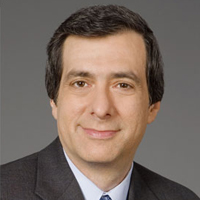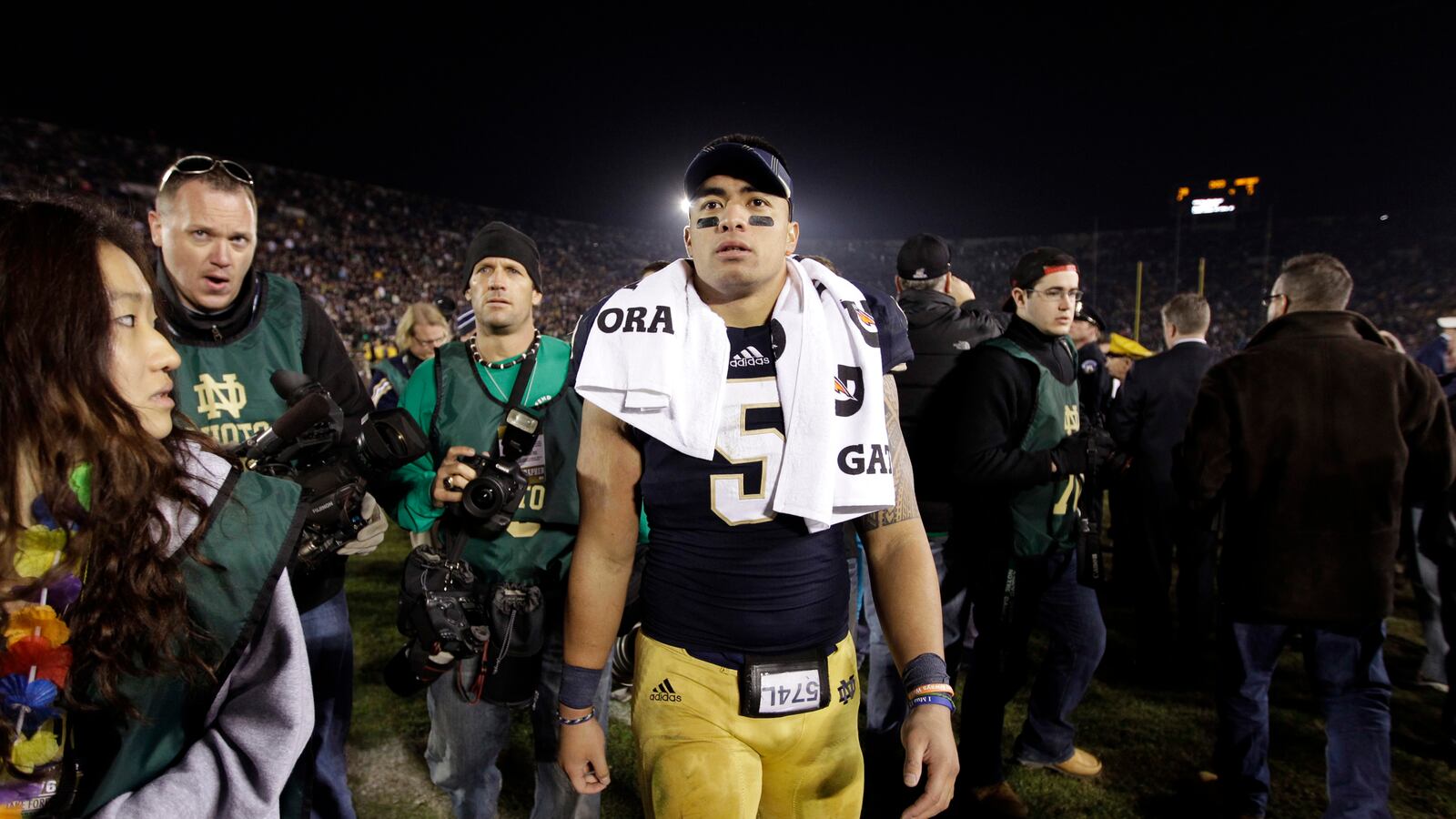All it would have taken was a couple of phone calls.
Instead, blue-chip news organizations played along with what turned out to be a colossal hoax about the sad demise of Manti Te’o’s imaginary girlfriend.

It was a colossal forfeiture by the mainstream media and a spike-the-ball touchdown for a pillar of the new media, the snarky sports blog Deadspin, which exposed the fact that the Notre Dame star had marketed a tale that was false in every respect.
Let’s be clear: it wouldn’t have taken Bob Woodward to unravel this tissue of lies.
“We were all duped,” CBS correspondent Chip Reid said in reporting Thursday that he was among those who bought in to the myth that Te’o had been mourning the death of Lennay Kekua—and was inspired to play stellar football for the Fighting Irish.
Virtually all the details about this heartbreaking tale of lost love came from Te’o and his family and friends.
Kekua was said to have gone to Stanford: easy to check. The school has no record of her.
Kekua was reportedly injured by a drunk driver in a car accident in California. Except there was no record or news story about the accident.
How about her death? Uh-uh. No death notice or other confirmation that a woman who never existed had passed away.
To his credit, Sports Illustrated’s Pete Thamel, who wrote a detailed account of Te’o’s loss of his grandmother (true) and girlfriend (false), tried to check these details. He just didn’t heed the results of his own reporting.
Thamel writes: “In retrospect there were some red flags. When I checked Lexis Nexis to find out more about Kekua, I couldn’t find anything, though that’s not uncommon for a college-aged student. Nor was there anything on her supposed twin brother, Koa. I was unable to track down any obituaries or funeral notices, but that might be explained by the fact that she had three recent places she called home, or by her family not wanting publicity.
“I called Mike Eubanks at Stanford to check Kekua’s graduation year. Te’o wasn’t sure if it was 2010 or 2011. Eubanks is an assistant athletic director for football and he coordinates on-campus recruiting visits. He knew Te’o from Stanford recruiting him in 2008 and ’09—Stanford had gone after him hard. Eubanks, who directed Stanford’s football media relations this season, couldn’t find her in the alumni directory and thought it was odd that, on such a small campus, he’d never heard of a student dating Te’o. This was the most glaring sign I missed. I thought that maybe she didn’t graduate, so we took any reference to Stanford out of the story.”
Every time there was a doubt, the reporter just rationalized it away.
Instead, Thamel’s story said that Te’o would call Kekua in her hospital room and stay on the line with her while she was sleeping: “Her relatives told him that at her lowest points, as she fought to emerge from a coma, her breathing rate would increase at the sound of his voice.”
And where did SI get most of its information? Manti Te’o.
There was little doubt that this was a poignant tale for the press, and maybe news organizations didn’t want to dig too hard and spoil the story line.
As ESPN correspondent Gene Wojciechowski told his network: “In retrospect, you can see where some of those things weren’t adding up to make sense,” he said. “It’s easy to say now, but at the time it never enters your mind that somebody was involved in that kind of hoax. We wanted to believe it so much.”
After all, didn’t anyone notice that the New York Post on one hand and ESPN and CBS on the other reported different dates for Kekua’s death?
Was Te’o, who claims to have been the victim of an embarrassing hoax, actually one of the perpetrators? When you get into the sordid details—the long phone conversations he claimed to have had with the woman, the inexplicable decision to skip her funeral—it becomes hard to imagine that he was some innocent victim.
But there is one undeniable culprit here, and that is Notre Dame. University officials now admit that Te’o and his parents told them on Dec. 26 that the Kekua story was fiction. Yet they said nothing—ostensibly to conduct an “investigation”—while news organizations continued to write about the woman’s death. That sounds like old-fashioned ass-covering.
There was one other arena in which the two Deadspin reporters, Timothy Burke and Jack Dickey, lapped the mainstream types. They examined Kekua’s Twitter account—the only tangible signs of her supposed existence—and that led them to uncover that the woman’s online photo had been lifted from another woman’s Facebook and Instagram pages, and they interviewed the stunned woman, who knew Te’o’s friend and classmate Ronaiah Tuiasosopo.
This kind of cybersleuthing could become increasingly important in a society in which many of us live our lives online.
There is much we still don’t know about the Te’o/Kekua scam. But there is no escaping the media’s gullibility.






